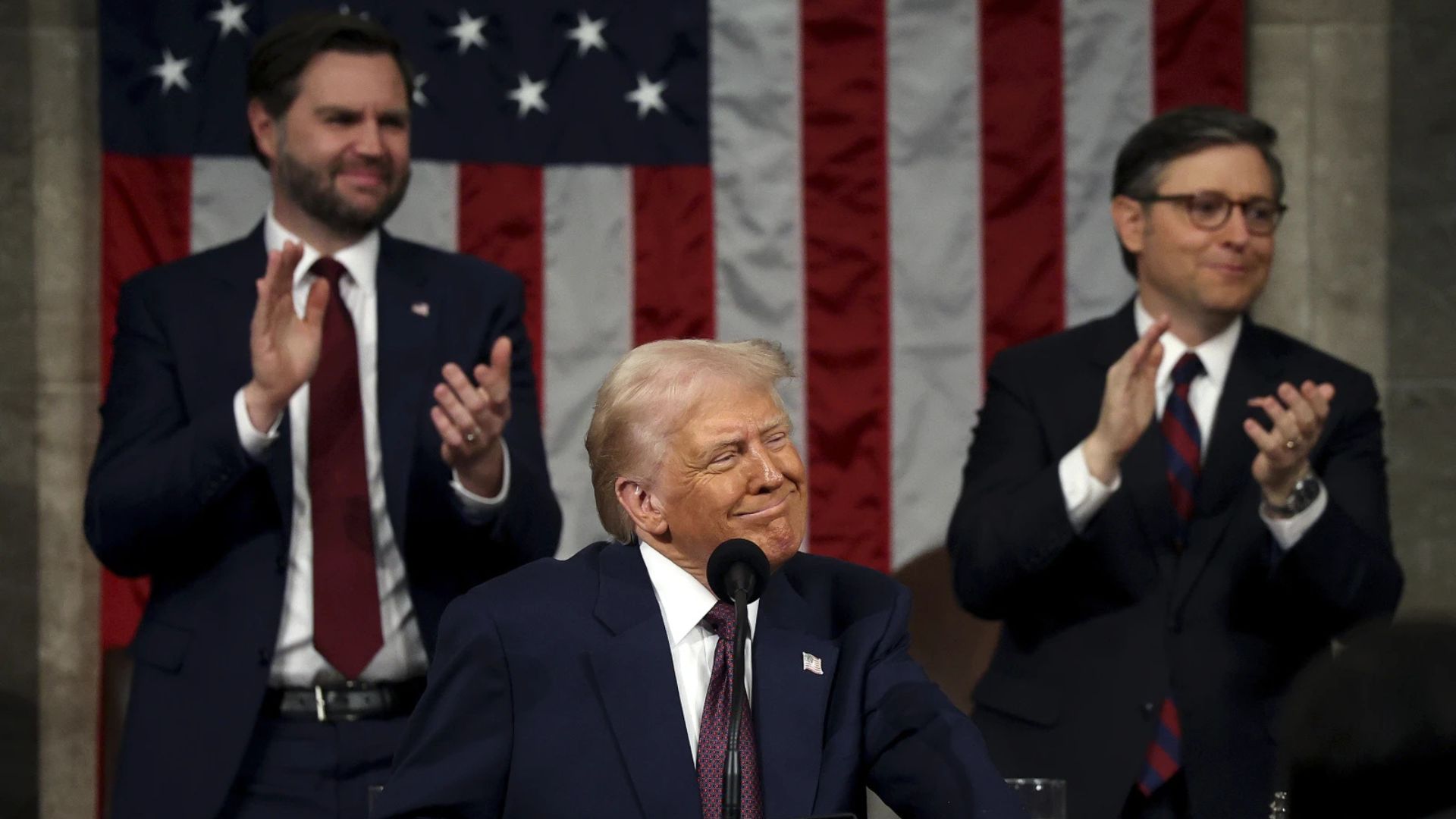When Eric Trump and Donald Trump Jr. rang the Nasdaq opening bell in mid-August, they weren’t celebrating a conventional Wall Street milestone. They were marking a financial loop: a public company the family had just steered now buying a newly minted cryptocurrency created by their own venture; and paying for it with money raised from outside investors.
At the centre of the loop sits World Liberty Financial, the family-backed crypto project that has vaulted from slogan to centrepiece of the Trump business universe in under a year. In August, ALT5 Sigma, a thinly traded US company that only recently pivoted from pain-therapy experiments to crypto payments, agreed to accumulate World Liberty’s governance token WLFI as a corporate “treasury” asset. To fund the strategy, ALT5 announced a $1.5bn share sale and private placement, with $750m in cash earmarked to buy the token and a further tranche of shares issued in exchange for WLFI itself. World Liberty, meanwhile, holds sway on both sides: it now controls ALT5’s boardroom seats and is also the source and gatekeeper of the tokens ALT5 is buying.
It is the kind of related-party, circular transaction that is rare in mainstream finance but increasingly familiar in crypto, legally possible when properly disclosed, yet riddled with potential conflicts of interest. Former SEC officials told the Wall Street Journal that while the structure may pass muster if investors are given full information, the arrangement pushes into territory that regulators once scrutinised far more aggressively.
The deal that pays the house
World Liberty’s token economics are unusually generous to insiders. A Reuters investigation earlier this year found that an entity tied to the Trump family is entitled to 75% of net revenues from WLFI sales, with the family also taking a majority stake in the venture’s holding entity. On Reuters’ numbers, the fee stream already runs into the hundreds of millions of dollars from the presale alone. The ALT5 transaction supercharges that flow: ALT5’s purchases confer real cash onto the World Liberty side of the loop while simultaneously marking the token on a corporate balance sheet.
ALT5 has told investors it expects to hold about 7.5% of total WLFI supply after the transaction, effectively warehousing the Trump-linked token on a Nasdaq company’s books. The company priced its cash raise at $7.50 a share and set the initial reference price for WLFI at $0.20, a level cited in multiple market updates and consistent with the company’s messaging around the treasury plan.
A public float of private loyalties
The ALT5 flip happened fast. Until 2024, the company traded under the name JanOne, a patchwork of recycling and experimental pain-treatment projects. It rebranded to ALT5 Sigma in July 2024 and later struck the World Liberty deal. Eric Trump has joined the ALT5 board, and World Liberty’s co-founder Zach Witkoff is chairman, cementing the family’s influence over the listed buyer of their own token.
Outside capital has followed. Filings show ExodusPoint Capital Management disclosed roughly 4.75% of ALT5, while Soul Ventures reported about 9.2%, real stakes that helped underpin the $750m cash raise. Point72 Asset Management also filed a Schedule 13G indicating a roughly 4% holding.
A Monday launch, after a choppy “pre-market”
WLFI’s full trading debut is scheduled for Monday, 1 September 2025, after weeks of “pre-market” action on crypto venues. When WLFI perpetuals began trading on Hyperliquid in late August, the token’s futures price fell more than 40% within hours as traders piled into shorts, a reminder that on-paper valuations can vanish as liquidity arrives. Exchanges including OKX and KuCoin have been running pre-listing price-discovery programmes ahead of the spot listing.
The family’s biggest bet yet
Whatever happens on day one, the family’s upside is staggering. The Journal reported that Donald Trump personally holds roughly two-thirds of the WLFI allocation, with the family’s overall stash valued on paper above $6bn based on futures pricing in the run-up to launch. They also hold other crypto exposures, from the $TRUMP memecoin to positions embedded in Trump Media & Technology Group. World Liberty itself has rolled out a USD-pegged stablecoin, USD1, pitched at institutions and promoted with the same political sheen that has propelled the WLFI sale.
A regulatory line-dance
World Liberty’s design concentrates control and cash flows in ways that decentralised finance typically claims to avoid. Governance tokens that cannot direct profit-sharing and revenue waterfalls that favour insiders set the project apart from leading DeFi platforms, according to external researchers cited by Reuters. The White House has rejected the idea that the president or his family have conflicts; nevertheless, the interdependence between the Oval Office’s crypto policy and the family’s private windfall is impossible to miss.
ALT5’s own history adds a twist. In 2021, before its rebrand, JanOne was named in an SEC complaint alongside Live Ventures and others alleging inflated income and reporting violations, claims JanOne has disputed in court; the case illustrates the swirl of disclosure risk around the issuer now fronting the WLFI treasury strategy.
Why this matters
For markets, ALT5/WLFI is a stress test of how far public-market wrappers can be used to financialise an affiliated crypto asset, and how much disclosure investors demand in return. For politics, it is a case study in entanglement: a sitting president’s family monetising a token whose fortunes may be shaped by the very regulatory stance his administration sets.
If WLFI rallies, the family’s paper wealth could swell into the tens of billions; if it slumps, outside investors, from hedge funds to retail, will be left holding the bag while the issuer’s related-party has already booked cash.
Either way, the loop spins: a public company buys a private token from a venture it is now tied to, and the house, for now, still takes its cut.

